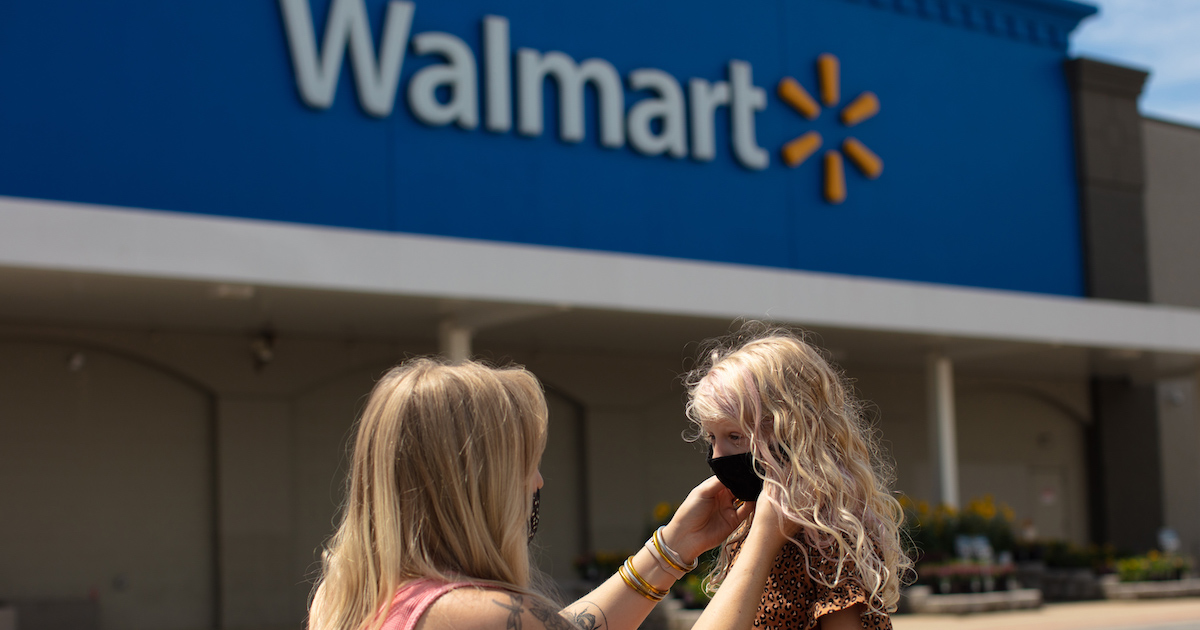
Photo courtesy of Walmart
Big retail is positioned to shake up the healthcare industry. With more than 200 million weekly customers, Walmart may have the reach to do just that. Walmart’s interest in healthcare isn’t anything new.
“Walmart believes we have a right to make healthcare disrupted. We are doing that by providing all of the assets that we have, and our mission is to provide affordable, accessible, human-centered care to all of our associates and the communities we serve,” Dr. Cheryl Pegus, executive vice president of health & wellness at Walmart, said yesterday at HLTH.
“We have a lot of assets, and so if we believe that social determinants make up 40% of healthcare, ... personal behavior is another 30% of healthcare, and the actual clinical care is just 20%. Of that 90% we believe we have a right and are able to play in that space today.”
Pegus said that people are not looking to spend a lot of time planning out their healthcare needs.
“We know by the way people spend more time planning their vacation than accessing healthcare,” Pegus said. “The focus of access means that we have to not stay in our private offices from 9-5 but actually provide healthcare the way people live.”
One area where Walmart is focusing its attention is on medically underserved communities (MUC). Pegus noted that Walmart has 4,000 stores located in MUCs. The retail giant is looking to address these communities’ needs, both through access to healthcare and social determinants of health.
“If we think about social determinants, personal behaviors and clinical care, we don’t need doctors to do personal behavior and social determinant management. So we employ and utilize community health workers who do a lot of this work,” she said.
Walmart is also able to provide individuals with fresh food – which Pegus notes is one of the largest unmet needs in the U.S. Teaming up with community partners is also one of Walmart's main strategies.
“In the U.S., we have about 1.5 million associates. They live in these communities. I just said that 4,000 of our stores are in medically underserved areas,” Pegus said. “So the people who work at Walmart – they are from these communities, they are trusted in these communities. The way that we partner is we first listen. We hear the needs of our own associates, we partner with leaders in the community and then we provide services.”
In 2019, Walmart announced that it was expanding its clinical-care footprint by opening centers in Texas and Georgia. However, Walmart has recently made moves in the digital healthcare space. In May, the company acquired multispecialty telehealth company MeMD. Just a year before it snapped up digital medication-management company CareZone’s tech platform, patents and “key intellectual property.”
“If you are in a medically underserved area, it’s not that you don’t want to get access to healthcare. It's that it's not available. There aren’t enough healthcare professionals. When we look at these communities – and I’ve already mentioned we’ve got a ton of access points – what we said is 'How do we get them care?' not five years from now when we build more clinics.”
Pegus called telehealth an omnichannel access tool that can help patients get to the right kind of care, however, it won’t completely replace a human.
Last month Walmart announced that it would begin using Epic’s EHR in its centers in 2022. The company is pitching this as a way for patients to get more personalized care across specialties at Walmart, such as vision and primary care.
“Healthcare means that, from a strategic perspective, you provide an integrated experience, hence why we are putting everything on one EMR platform. That’s your omnichannel. Thinking about the consumer and how they like to access care, and addressing the things that really drive healthcare costs and impact the quality of life and clinical outcomes.
"We believe value-based care is the way you get there … so for us it seems pretty simple and clear ... what we have to do and should be doing. ... The innovation and what we are focused on is really: How do we make it affordable and accessible?”

















